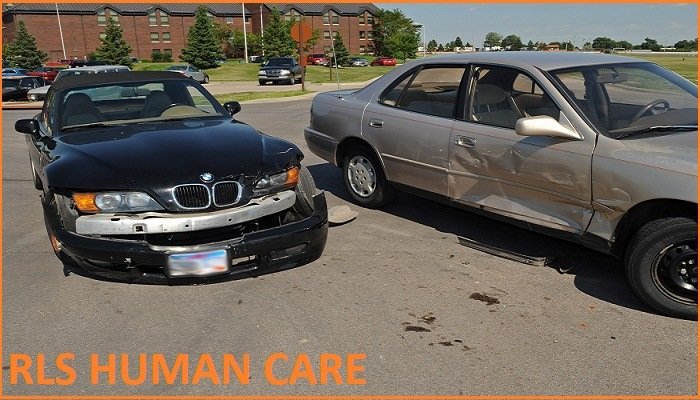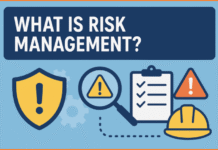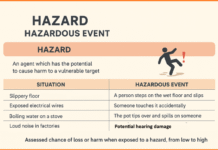Contents
The causes of road accidents
- Behavior & attitude account for 96% in the main causes of car accidents.
Speed
- On all types of road network, including motorways, speed is a factor in 50% of fatal accidents (inappropriate speed in circumstances such as bad weather, heavy traffic, etc., or speed beyond authorized limits).
- The link between speed and accidents has been proven the world over – when average speeds are reduced by just 1 km/h, the number of deaths falls by 4%.
- Stopping distance increases with speed. There are two reasons for this:
- The distance traveled during the driver’s reaction time (which is always around one second) increases. Before he even brakes, therefore, he will have traveled 14 m at 50 km/h, 25 m at 90 km/h and 36 m at 130 km/h.
- Then there is the braking distance, which is longer the higher the speed and the heavier the vehicle.
- Driving becomes more difficult: the driver must assimilate a great deal of information and complete several tasks in a shorter period of time. The resulting stress increases fatigue and reduces alertness.
- The driver has ‘tunnel vision’: his field of vision, which is 100° at 40 km/h, is limited to 30° at 130 km/h.
- Visual acuteness diminishes with speed. At 72 km/h, acuteness is no more than 5/10 for the average person.
- The probability of being killed increases as speed on impact rises:
– 15% at 30 km/h
– 30% at 40 km/h
– 60% at 50 km/h
– 85% at 60 km/h
Alcohol
The effects of alcohol become apparent even at low doses:-
between 0.3 and 0.5 g/l of blood:-
Feeling of euphoria develops. The driver takes risks he would not otherwise have taken
Slightly blurred vision – inability to judge distances, lateral vision impeded
between 0.5 and 0.8 g/l of blood:-
Reaction times lengthen
Blurred lateral vision – driver has difficulty seeing road signs and pedestrians waiting to cross
more than 0.8 g/l of blood:-
Less able to make decisions and adapt driving to circumstances
Begins to lose ability to co-ordinate and synchronize movement
The risk of a fatal accident is multiplied by:-
2 at 0.5 g of alcohol per litre of blood
10 at 0.8 g of alcohol per litre of blood
35 at 1.2 g of alcohol per litre of blood
80 at 2.0 g of alcohol per liter of blood
Drowsiness:-
- The effect of the following factors is widely acknowledged:
- regular and monotonous background noise has a soporific effect
- too high a temperature inside the vehicle reduces alertness
- darkness encourages drowsiness (whereas strong light heightens alertness)
- a heavy meal with alcohol induces drowsiness
- alcohol encourages sleep
- certain drugs can temporarily impair driving ability
Mobile phones:-

- Telephoning while driving clearly increases ‘brain strain’, which in turn increases the risk of accidents.
- In the United States, the accident rate was found to double in vehicles fitted with telephones. In Canada, the risk of accidents increases fourfold where telephones are used.
The following factors show that the driver is distracted:-
- he takes longer to react to unanticipated events.
- the vehicle tends to drift or swerve.
- he instinctively slows down, which can be dangerous in heavy traffic.
- there is a change in the driver’s visual behavior (he fixes his gaze on a point immediately in front of him, and his field of vision is narrowed). (Note that 90% of the information required for driving is assimilated visually).
- These harmful effects have been observed even where ‘hands free’ mobiles are used.
Seat belts:-

- Where seat belts are used, the number of deaths among drivers is halved, while passenger deaths are three times less likely
- It is six times more dangerous to be thrown from a vehicle than restrained by the seat belt
- Fire is not a common occurrence (1 in 3,000 cases), and rarely breaks out immediately
- In France, 120 rear passengers die every year through not wearing seat belts. In addition, 40 drivers and front seat passengers are killed by a rear passenger being thrown onto them
- Seat belts are more effective at low speeds (less than 50 km/h) than at very high speeds (more than 130 km/h). It should be noted that the majority of serious accidents occur at impact speeds of between 50 and 80 km/h
- The following should therefore be borne in mind:
- a collision at 50 km/h has the same effect as falling from the fourth floor of a building
- even in low impact accidents (30 km/h), the driver cannot hang on to the steering wheel because he is subject to such force that his weight is multiplied by 4 or 5
Core Requirements:-
- The programme of work must take account of journey times and the safety rules to be followed when travelling.
- Before setting out, the driver must check the condition of the vehicle.
- Vehicle must not be overloaded.
- Drivers and occupants of vehicles must use seat belts where installed and motor cyclists must wear safety helmets.
- Drivers must steer clear of alcohol and drugs.
- Speed limits must be strictly complied with.
- At-work driving injuries and vehicle accidents must be reported.
- Recommendations for Management.
- Recommendations for drivers.
- General recommendations.
- Specific recommendations for car or lorry drivers.
- Specific recommendations for users of two-wheeled vehicles.
- Recommendations for vehicle safety.
- Recommendations when you come across a road accident.
Recommendations for management:-
It is the duty of the management to set an example and to address the road safety issue at meetings with their teams
Local management should:
- develop a policy for company vehicles and hire vehicles.
- Establish clear driver and vehicle safety objectives.
- Take vehicle safety into account in the recruitment process.
- Offer their employees appropriate training.
- Ensure that all incidents, even the minor ones, are reported and communicated and accident analysis are carried out.
- Ensure that corrective measures are implemented.
Recommendations for driver:-
- Bear in mind the journey time.
- Plan the route.
- Ensure that the mirrors are in the correct position.
- Check that headrests are adjusted.
- Check the fuel gauge.
- Test braking performance during the first kilometers.
Adjust the speed:-
- Where there are no limits, take account of the need to retain control of the vehicle, and the need to make an emergency stop if necessary.
- Adjust the speed according to driving conditions.
- Speed is contagious. Be aware of the dangerous ‘knock-on’ effect of a stream of fast cars on the road.
Think ahead:-
- Look ahead to where your vehicle will be 15 seconds or more from now.
- Look around to identify any problems or incidents before they arise.
- Allow a ‘two-second distance’ between your car and the vehicle ahead. Add one second to this if the road is wet, in heavy traffic, or if the vehicle behind is too close.
Think ahead (cont.):-
- When slowing down, use the vehicle warning lights to alert those behind.
- If the flow of traffic comes to a standstill, left a 2 to 3 meter gap with the vehicle ahead.
- Don’t put your vehicle in neutral until it is sure than there is no danger from the traffic behind.
- When approaching a high-risk stretch of road or whenever visibility is reduced, place your foot over the brake. Position also one finger over the horn.
- Allow a safety margin when approaching a bend.
- Concentrate on possible ways of avoiding an obstacle.
- Ensure that you are seen and understood to avoid errors of interpretation.
Attempt to foresee the movements and errors of other people. Pay particular attention to the following situations:
- Parked cars.
- Children playing on the pavement.
- Heavily laden vehicles.
- A slow vehicle on the other side of the road.
Stay alert:-
- Do not begin to drive if not rested.
- Do not drink excessive amounts of coffee.
- Avoid heavy meals.
- Drink plenty in extreme heat.
- Do not drive after taking drugs which may cause drowsiness.
- Do not drive while eating, smoking, reading, or adjusting the radio or cassette/CD player.
- Take breaks every 2 hours.
- Stop at the first signs of fatigue.
- Avoid as far as feasible long and/or night drives.
Avoid to use a mobile phone:-
- Turn off the phone when driving.
- Switch on the voicemail facility.
- Stop in an appropriate place to make a call or listen to messages.
As a minimum, use only hands-free mobile phone installation while driving
Be attentive to others:-
- Pay particular attention to other vehicles and pedestrians.
- Be mindful of any risks behind you by checking the mirror regularly.
- Remain calm and courteous at all times.
Railway crossing:-
Be extremely careful,
the train is always stronger…
Never cross when the right light is on
or the gate bar is closed!
Park safely:-
- Park your vehicle so that it is facing the way of exit.
- When vehicle is not in use, locked it and secured in low gear and with the parking brake.
- Never leave the car running and unattended or unlocked when parked.
Seat belts:-
- Fasten your seat belt even in airbag equipped car.
- Avoid twists in seat-belts during fastening.
Recommended equipment:-
- A mobile phone.
- A torch and spare batteries.
- A first aid kit.
- A dry chemical fire extinguisher.
- A tin of bulbs and spare fuses.
- A rescue blanket.
- Pen and paper.
Clothing:-
- Use a full-face helmet.
- Never paint your helmet.
- Wear appropriate equipment:
- Shoes which cover the ankles, or boots,
- Hardwearing leather trousers or jeans.
- Tough long-sleeved jacket (or a leather suit)
- Thick gloves
- Avoid trainers, short-sleeved shirts, shorts and acrylic clothing
- Use at night, a fluorescent armband.
Carrying a passenger and/or baggage:-
- Adjust the suspension and increase the Tyre pressure according to the load carried.
- The passenger should:
- Sit as close to the driver as possible and preferably hold on to him/her with one hand, the other on the handle behind the seat
- Do not put the feet down on the road when you stops temporarily during the journey (e.g. at a red light)
- Avoid sudden movements, and move with the driver.
Use a vehicle in good condition:-
- Maintain your vehicle properly at all time by routine inspection and maintenance.
- Carried out a thorough overhaul at least once a year, with particular attention paid to the tyres, the brakes and the lights.
- Panniers at the back are preferable to one large bag.
- Use a a hard top box when carrying a heavy load.
Vehicle Safety:
Recommendations for 4-wheel vehicle drivers
At least once a month check:
- Areas which are vital for safety (brake fluid, power steering, windscreen washer).
- Tyre pressure and condition (wear, bulging), including the spare wheel.
- The working of the lights and horn.
- The working and condition of the windscreen wipers.
- That the vehicle contains a jack, wheel brace, bulbs and fuses, and a warning triangle.
- Brakes
- The brake pads (or brake shoes) must be in good condition. If they are worn, not only do they no longer work correctly, but they also damage the brake discs (or drums), which are costly to replace.
- Check for signs of wear every 5,000 km.
Recommendations for 2-wheel vehicle drivers (cont.)
Tyres
- Check tyre pressure every fortnight, when the bike is standing.
- Change the tyres as soon as signs of wear appear.
- As the tyres wear out, the motorcycle does not ‘respond’ as well: it wanders from side to side, the driver ‘feels’ the bumps and joins in the road, bends become harder to negotiate, etc. In addition, a worn tyre affects the braking, punctures more easily and is liable to burst at high speeds.
Chain
- It must be sufficiently taut – 2-4 cm of clearance for a touring bike, for example – and oiled regularly.
- Oiling the chain with the engine running or when the bike is in gear is highly dangerous and must not be done. Turn the wheel by hand.
- A worn or badly maintained chain increases fuel consumption; it overheats, the bike loses power and the chain is liable to break.
Fuel
- Fill up in good time, as it is dangerous to ‘go into reserve’ when on a bend or overtaking.
- On certain motorcycles, the reserve tank is small and does not last very long.
Recommendations when you come across a road accident:-
Do not endanger yourself
Remain calm, but act quickly and effectively
- Park correctly, away from the accident.
- If safe to do so, switch off the ignition in the damaged vehicle and put the hand brake on.
Warn other drivers
- Put your hazard lamps on. At night, use your headlights to light up the vehicles involved.
- Signal the accident 150 metres before and after.
At night, if possible, get someone to warn other drivers using signals
Call the emergency services
- Alert the emergency services (fire brigade, police)
- Provide the following information
Give them the number of the phone you are calling from the location of the accident and the direction of traffic the number and type of vehicles involved the number of victims and what state they appear to be in any particular risks: hazardous materials, fire risk, etc.
Offer assistance
- Speak to the injured person(s)
- Cover the casualty
- Remove any foreign bodies from the casualty mouth
- Loosen the casualty’s clothing
- Turn the casualty onto the left side with the right knee bent, with the head supported and with the mouth facing the ground (recovery position)
- If the casualty is in danger and must be moved:
Do not pull him/her by his/her limbs
Do not twist the spinal column (the head, neck and body must remain rigid and in line)
Administer first aid if you have been trained to do so
Do not:-
- Give an injured person anything to drink
- Remove the victim’s helmet
(this must, however, be done if the rider is unconscious in order to properly assess whether or not he is breathing and give artificial respiration if necessary)
Removing a helmet is a very delicate operation
which requires appropriate training
- Move the injured person or attempt to get him out of the vehicle, unless there is a major risk (e.g. fire or explosion)
- Take an injured person anywhere in your car
and now…
DRIVE
SAFELY
THANK YOU!!!!!







